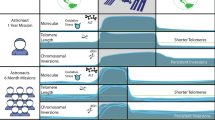Abstract.
Exposure to estrogens is a risk factor for breast and other human cancers. Initiation of breast, prostate and other cancers has been hypothesized to result from reaction of specific estrogen metabolites, catechol estrogen-3,4-quinones, with DNA to form depurinating adducts at the N-7 of guanine and N-3 of adenine by 1,4-Michael addition. The catechol of the carcinogenic synthetic estrogen hexestrol, a hydrogenated derivative of diethylstilbestrol, is metabolized to its quinone, which reacts with DNA to form depurinating adducts at the N-7 of guanine and N-3 of adenine. The catecholamine dopamine and the metabolite catechol (1,2-dihydroxybenzene) of the leukemogen benzene can also be oxidized to their quinones, which react with DNA to form predominantly analogous depurinating adducts. Apurinic sites formed by depurinating adducts are converted into tumor-initiating mutations by error-prone repair. These mutations could initiate cancer by estrogens and benzene, and Parkinson's disease by the neurotransmitter dopamine. These data suggest a unifying molecular mechanism of initiation for many cancers and neurodegenerative diseases and lay the groundwork for designing strategies to assess risk and prevent these diseases.
Similar content being viewed by others
Author information
Authors and Affiliations
Additional information
Received 4 September 2001; received after revision 28 November 2001; accepted 2 December 2001
Rights and permissions
About this article
Cite this article
Cavalieri, E., Rogan, E. & Chakravarti, D. Initiation of cancer and other diseases by catechol ortho-quinones: a unifying mechanism. CMLS, Cell. Mol. Life Sci. 59, 665–681 (2002). https://doi.org/10.1007/s00018-002-8456-0
Issue Date:
DOI: https://doi.org/10.1007/s00018-002-8456-0




